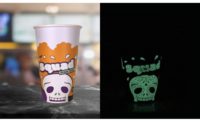The Need for Speed
By Andy Hanacek
In the world of form/fill/seal equipment, faster is better, but that isn’t always the best remedy. Sure, more speed improves output, but efficiency and lowering downtime due to changeovers are key as well.
At TNA, whose latest “triple-jaw” ROBAG 3 bagmaker allows speed of up to 200 bags per minute, the need for speed has led the charge for engineers for some time now, according to Bob Fritz, vice president of operations.
“The market has really adopted high-performance machines as a standard,” he says. “You go back 10 years and people were still in the 70-bag-per-minute mark. Whereas now you regularly go and talk to customers about running 120 bags a minute plus.”
In the digital, interconnected world we live in, networking form/fill/seal bagmakers with other packaging equipment can improve the efficiency of operations and reduce waste.
“We now look at the packaging room in a holistic manner,” says Jeffrey W. Almond, snack food industry manager for packaging systems at Heat and Control, Inc. “Our objective is to provide the marketplace a complete packaging cell, from processing to palletizing. Certainly the key element is weighing and bagging, but as the speed race continues, more automated functions within the line are needed to meet the efficiency requirements.”
Heat and Control introduced the Ishida Total Packaging System (ITPS) at PackExpo in Chicago in November. The new system integrates all units of a packaging line, using the latest Ishida R-Series weigher, Ishida ATLAS continuous motion snack bagmaker, and the ITPS-Net networking system, and ran 180 bags of corn chips per minute at the show.
Almond says that different snack manufacturers have specific needs in terms of what their form/fill/seal machines can do, and Heat and Control tries to address all types.
“For the larger players who can afford to set up a line and run on the same or similar product for extended periods of time, the integration and automation are key,” he says. “They need the ability to run as fast as possible while lowering film waste. … For the co-packer, quick changeover time is key because they typically run to order and may have several changeovers per shift.”
For companies like KEY-PAK Machines, efficiency is met through customization and keeping the bagmakers up and running.
“We often do customization to ensure not only the final package is produced to specification, but the means to have it produced is accomplished with efficient reliability,” Chris Wanthouse, director of sales and marketing for KEY-PAK, explains. “Our design allows for low maintenance and maximum uptime for bankable production expectations.”
KEY-PAK also has developed the EL Series machine, which specializes in the form/fill/seal of gusseted, block-bottom, stand-up bags — widely popular in the coffee and tea industries but making inroads into bakery-ingredient applications and spice-packaging applications as well. The EL Series machine is less expensive than KEY-PAK’s V-Series machines, while being competitive and not sacrificing quality.
These trends in form/fill/seal machines — speed, efficiency and improvement of uptime — are expected to continue to drive the industry, and there’s no reason for any manufacturer to slow down if the technology allows improvement. Fritz says TNA certainly won’t stop pushing the envelope in form/fill/seal technology, and he believes the industry as a whole shouldn’t stop pushing either.
“There’s no reason why we can’t continue to push the reject level lower, keep the machine running longer and faster, and continue that curve onward and upward,” he says.


